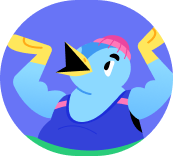Human case studies
Cards (31)
- What is the effectiveness of one past attempt to achieve food security at a national level case study?
- What is the effectiveness of one present attempt to achieve food security at a national level case study?
- What is the one attempting helping achieve food security at a local scale case study?
- What are some facts about Tanzania?
- What is goat aid?
- What are some advantages of Goat aid?
- What are some disadvantages of Goat aid?
- Is goat aid sustainable and successful?
- What is the wheat programme case study?
- What are the advantages of the wheat programme?
- In the topic urban futures which is the AC city?
- Birmingham's location...
- Why is birmingham important within its region?
- Why is Birmingham important within the UK?
- Why is birmingham important within the wider world?
- What is the LIDC- one initiative to make the city more sustainable?
- What is the Lagos waste management project?
- Where is a waste management project already happening?
- Is the Lagos waste management project sustainable?
- Why is Lagos important within its region, country and world?
- What are the patterns of national and international migration in Lagos?
- Where is the DRC?
- What is the example of a top down project?
- What are the advantages and disadvantages of the grand inga dam?
- What is the example of a bottom up project?
- What are the examples of the smaller projects the ECI support?
- What are some of the MDGs and have they been able to be achieved?
- How has the environment caused problems for DRC?
- access the extent to which a countries politics has been the greatest influence on its development?
- What is international trade like in the DRC?
- What is banro?
